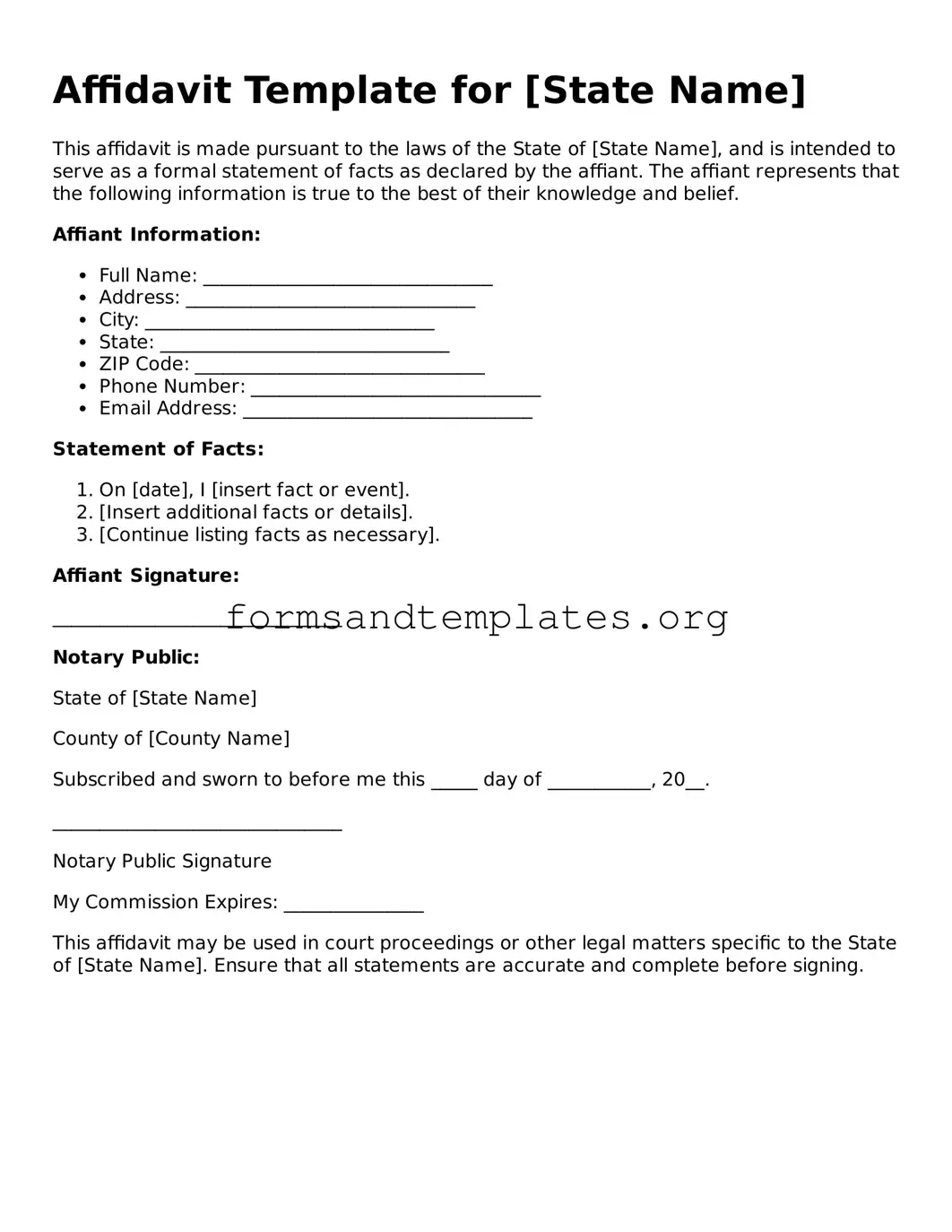Affidavit Template for [State Name]
This affidavit is made pursuant to the laws of the State of [State Name], and is intended to serve as a formal statement of facts as declared by the affiant. The affiant represents that the following information is true to the best of their knowledge and belief.
Affiant Information:
- Full Name: _______________________________
- Address: _______________________________
- City: _______________________________
- State: _______________________________
- ZIP Code: _______________________________
- Phone Number: _______________________________
- Email Address: _______________________________
Statement of Facts:
- On [date], I [insert fact or event].
- [Insert additional facts or details].
- [Continue listing facts as necessary].
Affiant Signature:
_______________________________
Notary Public:
State of [State Name]
County of [County Name]
Subscribed and sworn to before me this _____ day of ___________, 20__.
_______________________________
Notary Public Signature
My Commission Expires: _______________
This affidavit may be used in court proceedings or other legal matters specific to the State of [State Name]. Ensure that all statements are accurate and complete before signing.
